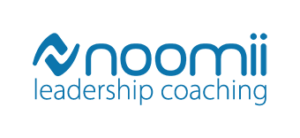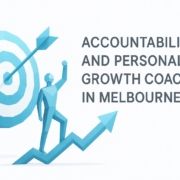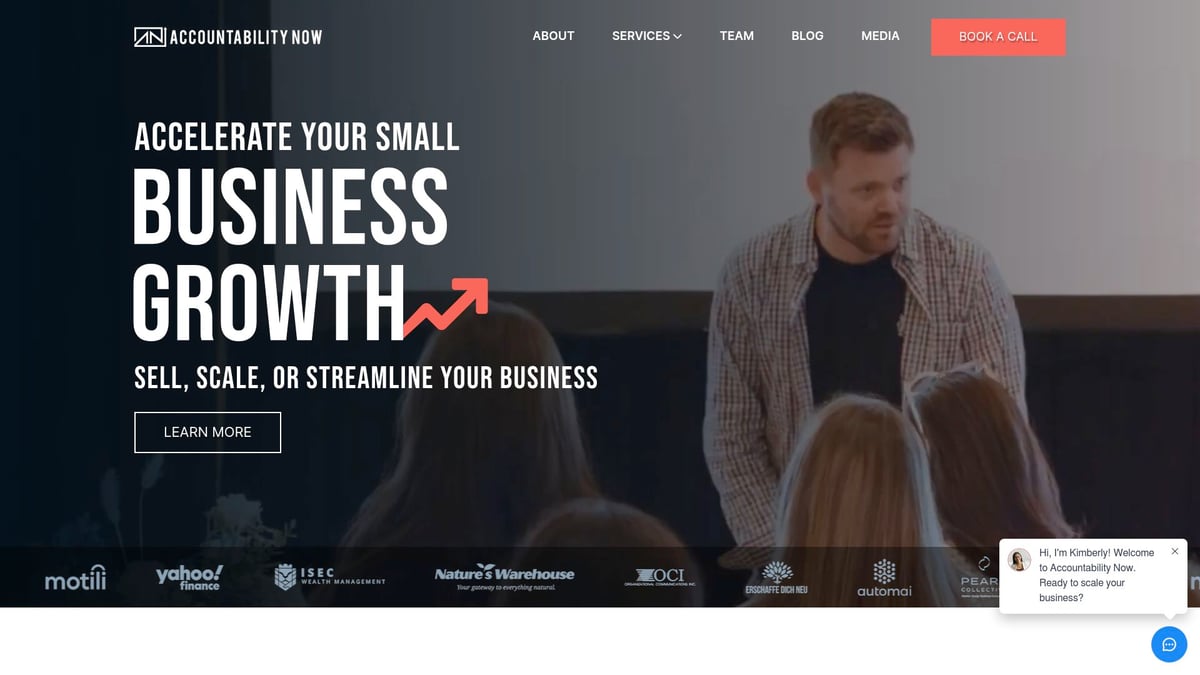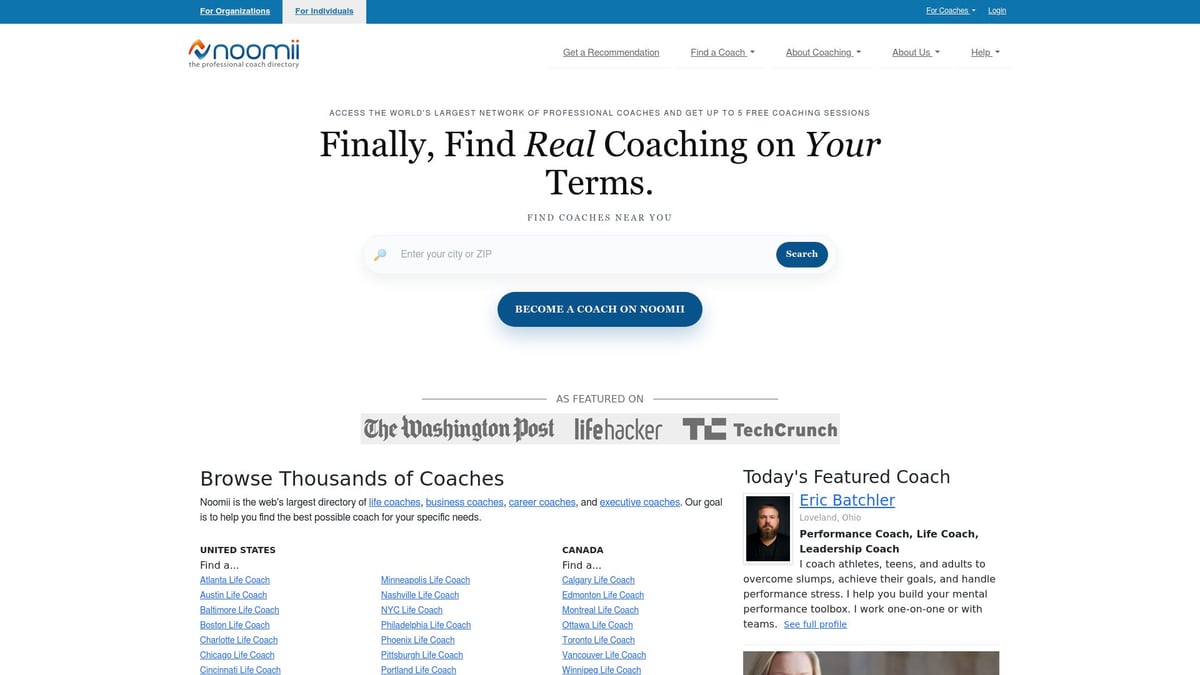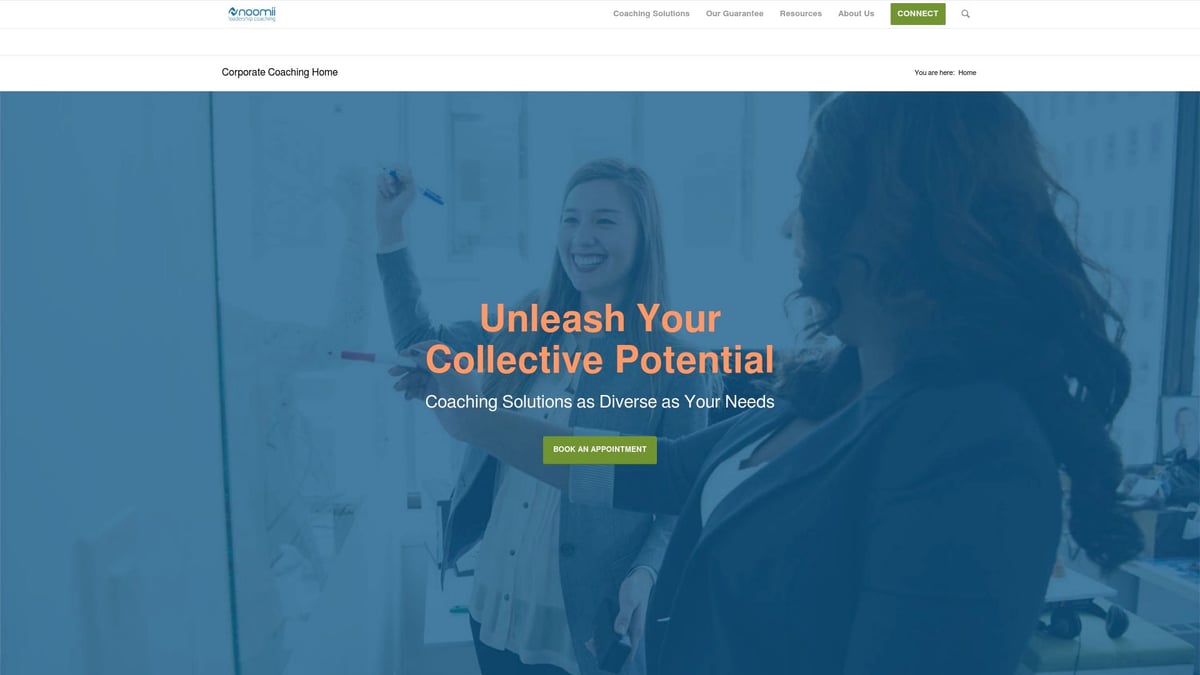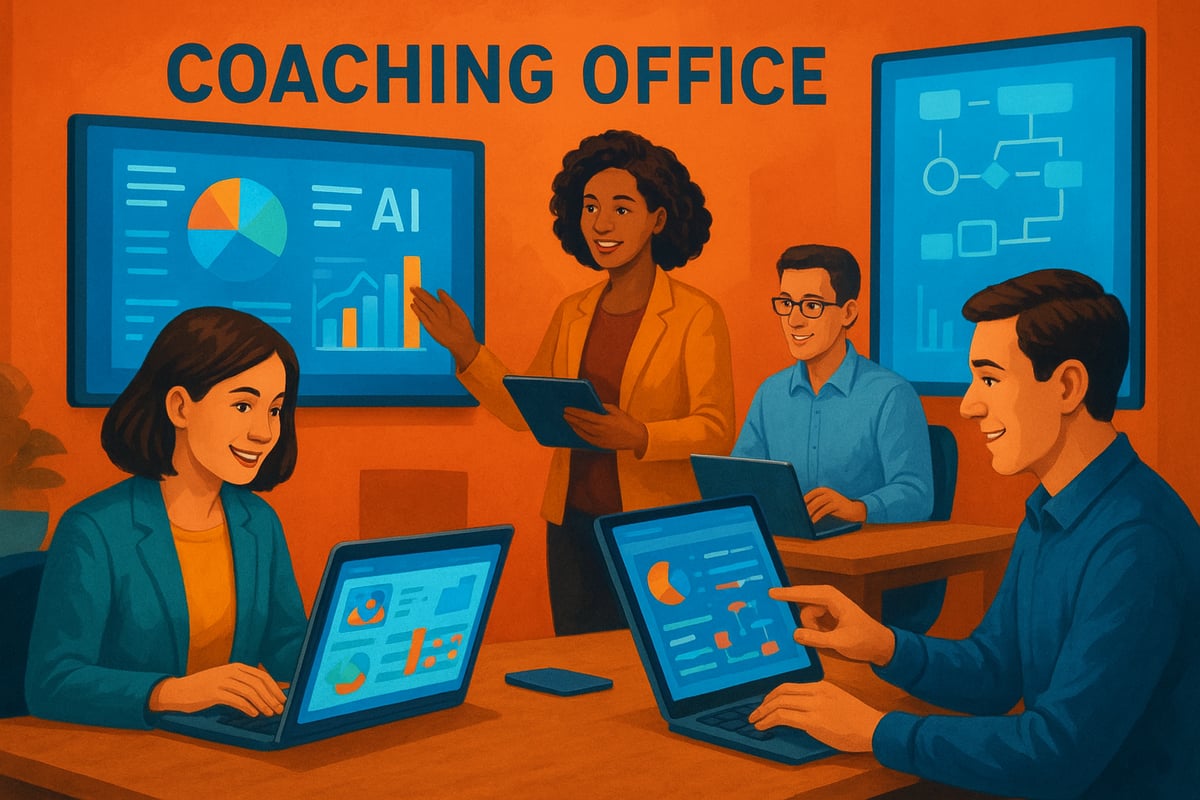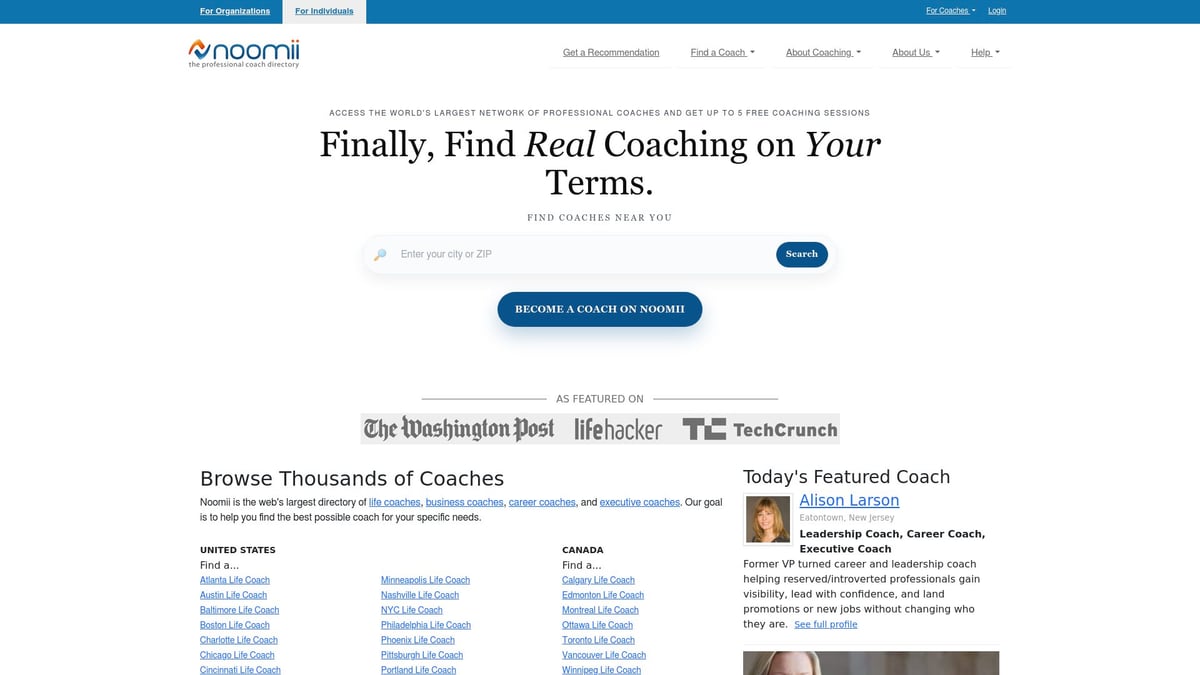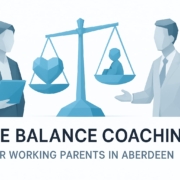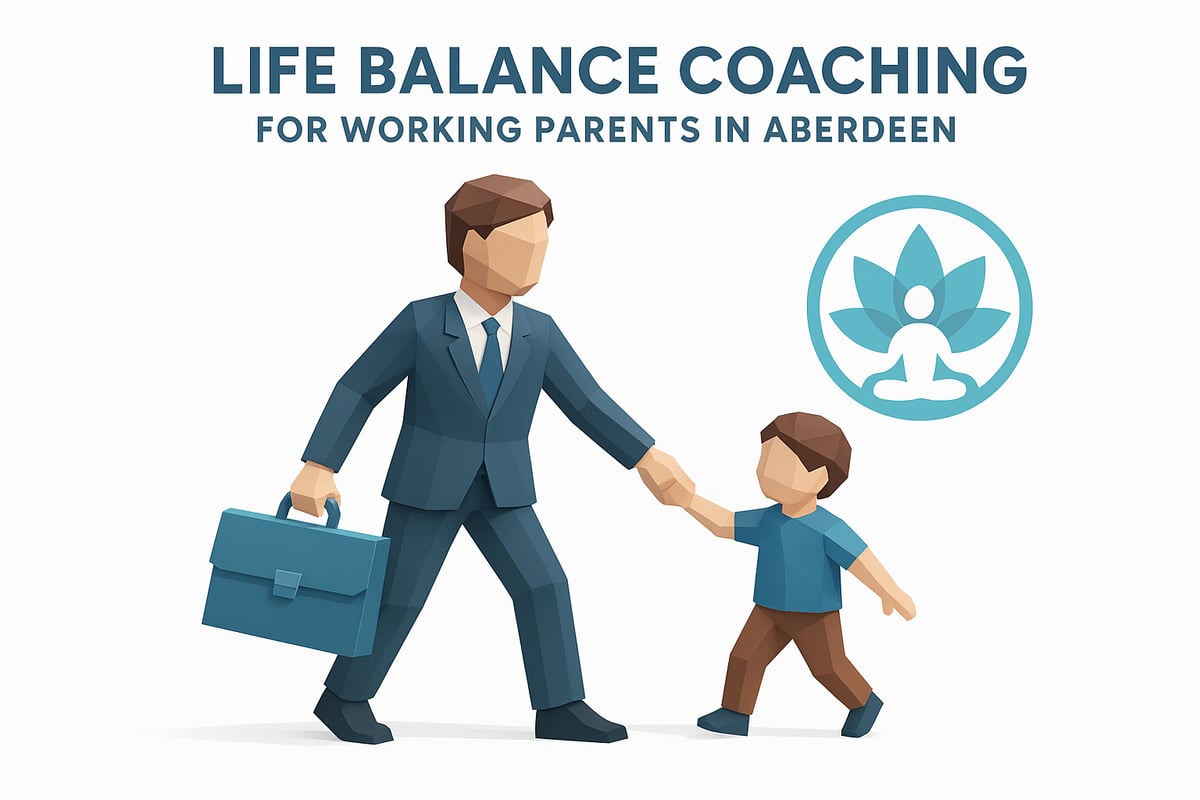Clarity and Confidence Life Coaching in Brisbane: The 2026 Guide
In 2026, Brisbane professionals are making big moves to elevate their careers and personal lives. More than ever, they are turning to clarity and confidence life coaching in brisbane to break free from limitations and unlock their true potential.
This guide dives into how clarity and confidence life coaching in brisbane empowers individuals to overcome obstacles, set meaningful goals, and thrive in all areas. You’ll discover what coaching involves, its unique benefits for Brisbane locals, how to select the right coach, the proven process, inspiring success stories, and the trends shaping the future.
Ready to start your journey? Explore actionable steps and connect with expert coaches at Accountability Now to take the first step toward lasting transformation.
Understanding Clarity and Confidence Life Coaching
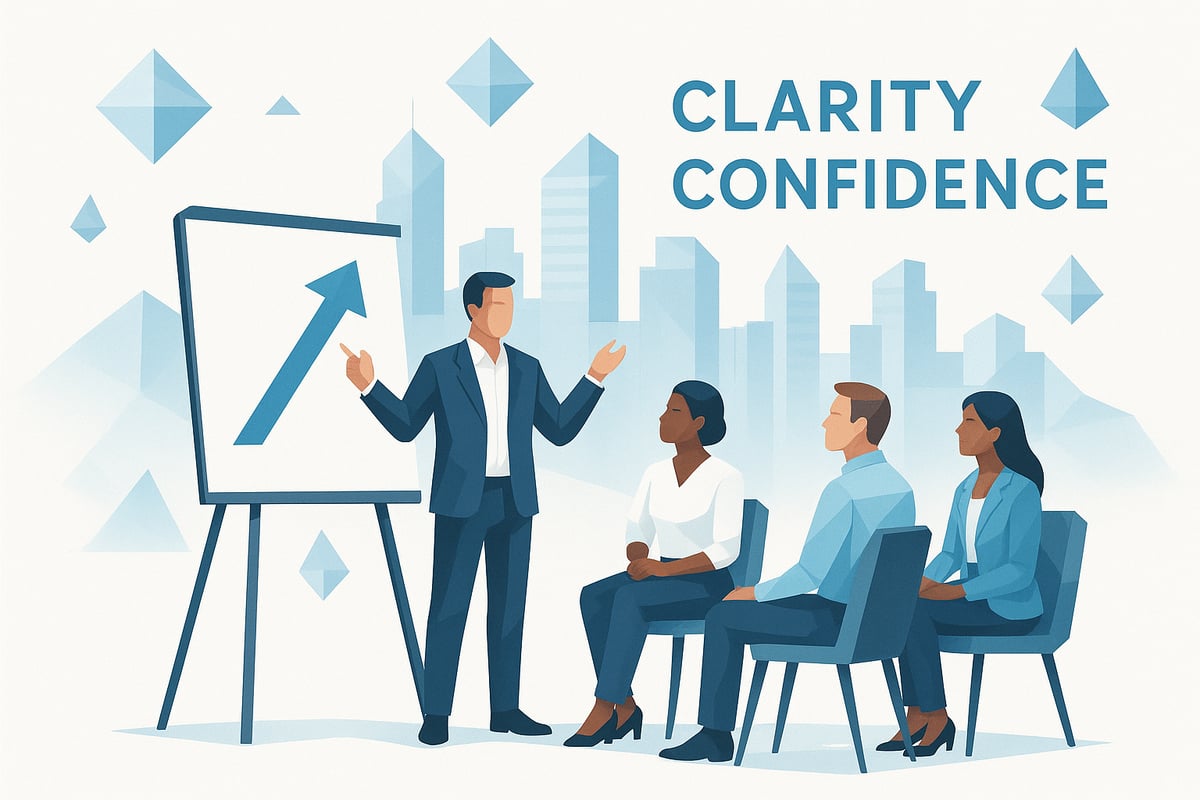
Defining Clarity and Confidence Coaching
Clarity and confidence life coaching in brisbane is a specialized form of coaching focused on helping individuals gain a clear sense of direction and build self-assurance. Unlike therapy, which often addresses past trauma or mental health, coaching is future-focused, aiming to unlock potential and drive personal growth. It also differs from mentoring, as coaching is client-driven rather than advice-based.
The process involves proven techniques such as goal-setting, value alignment, and cognitive reframing. Coaches work closely with clients to identify personal strengths and clarify priorities. Through clarity and confidence life coaching in brisbane, people learn to challenge limiting beliefs and develop practical strategies for lasting change.
These sessions are structured, action-oriented, and tailored to each individual's needs. Clients are empowered to take ownership of their journey and see tangible results in both personal and professional spheres.
Core Benefits for Individuals
Clarity and confidence life coaching in brisbane delivers measurable benefits for individuals committed to personal development. Clients often report enhanced decision-making and greater self-awareness, which lead to improved outcomes in work and life. A key advantage is increased resilience, allowing people to manage stress more effectively and navigate challenges with confidence.
Emotional intelligence is another area where coaching makes a significant impact. Clients learn to regulate emotions, communicate better, and strengthen relationships. Real-world results include clearer career direction, healthier relationships, and a greater sense of wellbeing.
According to the ICF Global Coaching Study 2025, 80% of coaching clients experience a boost in self-confidence. This statistic underscores the transformative power of clarity and confidence life coaching in brisbane, making it a compelling choice for those seeking meaningful change.
Why Brisbane? The Local Context
Brisbane’s dynamic professional landscape presents unique challenges and opportunities for those seeking clarity and confidence life coaching in brisbane. The city’s growing economy, particularly in professional services, creates a fast-paced environment where career advancement and personal fulfillment are top priorities.
Cultural factors, such as Brisbane’s collaborative business ethos and emphasis on work-life balance, fuel demand for coaching services. Professionals here often face pressures to perform, adapt to change, and maintain wellbeing in competitive industries.
The flourishing sector means more individuals are investing in their growth. As clarity and confidence life coaching in brisbane becomes more prevalent, it responds to local needs by offering tailored support that aligns with Brisbane’s distinctive culture and ambitions.
Common Client Profiles
Clients seeking clarity and confidence life coaching in brisbane come from diverse backgrounds, but several profiles stand out. Young professionals aiming to accelerate their careers, executives managing high-stakes decisions, and entrepreneurs navigating uncertainty are common. Many are in transition, seeking direction after a career change or during periods of self-doubt.
Motivations include overcoming imposter syndrome, finding purpose, and building resilience. For example, a Brisbane entrepreneur might turn to coaching to gain the clarity and confidence needed to lead a growing business. Through focused guidance and accountability, these individuals achieve breakthroughs that redefine their personal and professional paths.
To explore how coaching can drive similar results, visit Accountability Now for more insights and resources.
The Step-by-Step Coaching Process in Brisbane
Embarking on clarity and confidence life coaching in brisbane is a transformative journey. The process is structured, supportive, and tailored to help you break through barriers and achieve meaningful growth. Let’s walk through each step so you know exactly what to expect.
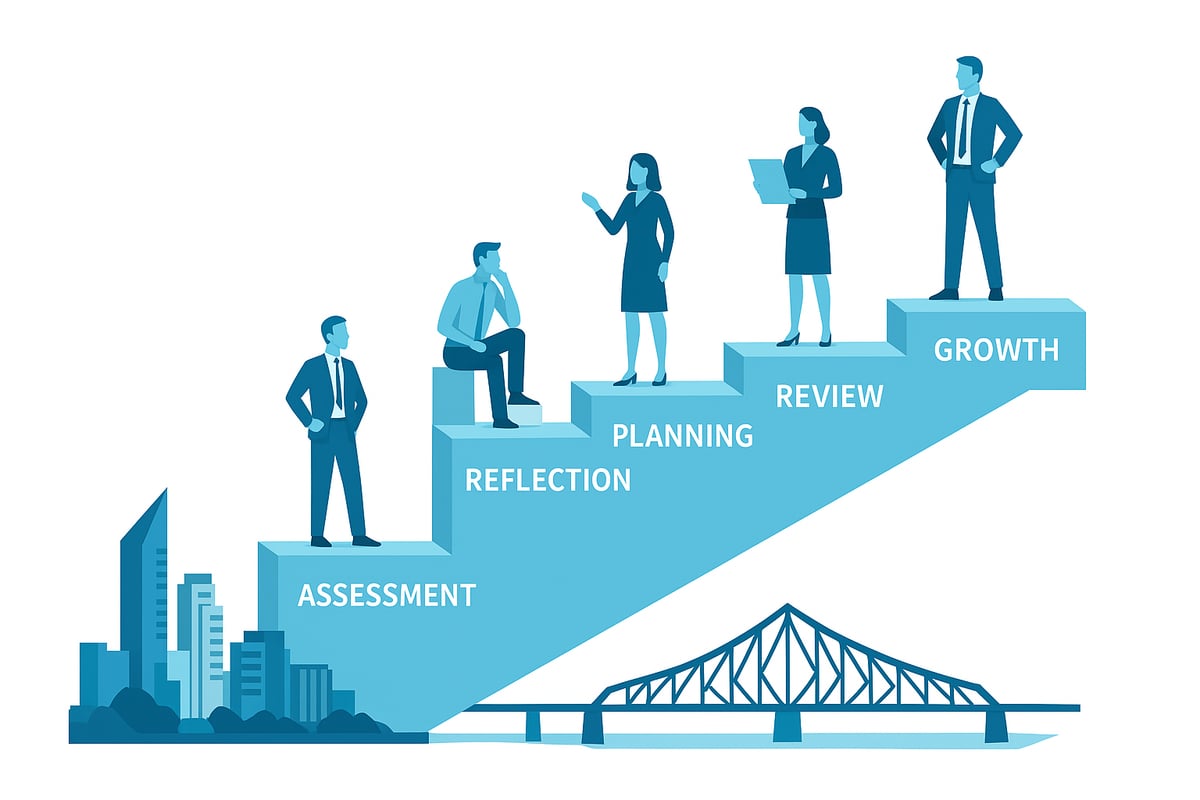
Step 1: Initial Assessment and Goal Setting
The first step in clarity and confidence life coaching in brisbane is all about understanding where you are and where you want to go. Coaches start by using self-assessment tools and detailed questionnaires. These help uncover your core values, strengths, and the obstacles you’re facing.
Clients often reflect on what truly matters to them. This process leads to setting clear, actionable goals that are aligned with personal and professional aspirations. For instance, a mid-career professional may use this phase to set SMART goals for a promotion or new career direction.
During this stage, you’ll work closely with your coach to clarify your vision. Every aspect is designed to create a strong foundation for the rest of your clarity and confidence life coaching in brisbane journey.
Step 2: Building Self-Awareness and Mindset Shifts
Next, clarity and confidence life coaching in brisbane focuses on building deep self-awareness and shifting unhelpful mindsets. Coaches introduce techniques like mindfulness, daily journaling, and guided reflection. These tools encourage you to notice thought patterns, feelings, and reactions.
Identifying limiting beliefs and cognitive biases is crucial. Many professionals discover they’ve been held back by self-doubt or perfectionism. With a coach’s support, you’ll reframe negative thoughts and adopt a growth-oriented mindset.
This step is transformative. It lays the groundwork for lasting confidence and clarity, helping you approach challenges in brisbane’s competitive environment with a new sense of self-assurance.
Step 3: Action Planning and Accountability
Once you’ve gained self-awareness, clarity and confidence life coaching in brisbane moves into action planning. Together, you and your coach develop a step-by-step roadmap for achieving your goals. This plan breaks big objectives into smaller, manageable milestones.
Accountability is a cornerstone of the coaching relationship. Coaches use progress-tracking tools, regular check-ins, and digital platforms to keep you on track. These structures ensure you stay motivated and make steady progress, even when life gets busy.
By the end of this phase, you’ll have a clear path forward. Action planning within clarity and confidence life coaching in brisbane empowers you to turn insights into real-world results.
Step 4: Progress Reviews and Adjustments
Continuous improvement is essential in clarity and confidence life coaching in brisbane. Regular progress reviews help you see what’s working and where adjustments are needed. Coaches provide honest feedback, celebrate wins, and help you navigate setbacks.
If a client faces unexpected changes, such as a sudden job transition, the coach works with them to adapt goals and strategies. This flexibility is vital in Brisbane’s dynamic job market.
Feedback loops keep you engaged and learning. Every review strengthens your commitment to growth and ensures the coaching process remains relevant to your evolving needs.
Step 5: Sustaining Growth Beyond Coaching
The final step in clarity and confidence life coaching in brisbane focuses on long-term success. Coaches equip you with self-coaching skills, resilience strategies, and resources for independent growth. Building a support network is encouraged, whether through local meetups, workshops, or online communities.
Ongoing growth is sustained by embedding new habits and mindsets into everyday life. Many clients continue their journey by connecting with Brisbane’s vibrant professional development scene.
For those looking to maintain momentum and accountability, resources like Accountability Now offer ongoing support beyond initial coaching engagements. This ensures your clarity and confidence continue to evolve, empowering you for years to come.
Choosing the Right Life Coach in Brisbane
Selecting the right professional for clarity and confidence life coaching in brisbane is crucial for your growth journey. The right match accelerates results, while the wrong fit can stall progress. Use this guide to make an empowered decision.

Credentials and Experience to Look For
When evaluating clarity and confidence life coaching in brisbane, prioritize coaches with recognized credentials. Look for International Coaching Federation (ICF) accreditation, formal psychology backgrounds, or reputable coaching certifications. These qualifications signal a commitment to ethical standards and continued learning.
Local experience is critical. Coaches who understand Brisbane’s professional culture bring valuable context to sessions. Specialization also matters. For example, if you’re an entrepreneur, seek a coach who focuses on business or leadership coaching.
Here’s a quick table to help compare common coach credentials:
| Credential Type | Description | Value |
|---|---|---|
| ICF Accreditation | Gold standard in coaching | High |
| Psychology Degree | Understanding of human behavior | Medium–High |
| Industry Specialization | Relevant sector experience | High |
Explore the different types of life coaches to better match your needs with the right expertise.
Questions to Ask Before Hiring
Before committing to clarity and confidence life coaching in brisbane, ask targeted questions to assess fit and effectiveness. Key queries include:
- What is your coaching style and methodology?
- Can you share success stories or references?
- What is your background in coaching clients with similar goals?
- How do you measure progress and outcomes?
- Do you offer trial sessions or discovery calls?
Chemistry is vital. A trial session reveals if your communication styles align. Use this checklist when vetting candidates:
- Credentials verified
- Local and industry experience
- Transparent about methods and results
- Positive testimonials and references
A thoughtful approach ensures you invest in a coach who genuinely supports your ambitions.
Red Flags and What to Avoid
As you search for clarity and confidence life coaching in brisbane, stay alert to warning signs. Avoid coaches who lack transparency or provide vague promises about quick results. Be cautious of unverified testimonials or reluctance to share qualifications.
Ethical standards and confidentiality are non-negotiable. The International Coach Federation reports that 65 percent of clients cite coach credibility as their top selection factor. If a coach cannot clearly outline their code of ethics or dodges questions about confidentiality, keep looking.
Common red flags include:
- No formal training or certification
- Overly generic or exaggerated claims
- Inconsistent communication
- Pressure to commit without clarity
Trust your instincts and prioritize professionalism at every stage.
Cost, Packages, and Value
Understanding the investment in clarity and confidence life coaching in brisbane helps you weigh short-term costs against long-term value. Coaches may offer hourly rates, package deals, or group programs. Typical inclusions are one-on-one sessions, digital resources, and sometimes access to workshops or online communities.
Balancing cost with value is essential. Consider the potential return on investment, such as improved performance, greater wellbeing, or career advancement. Some coaches offer bundled sessions for better value or sliding scales for accessibility.
Ask for clear breakdowns of costs, cancellation policies, and what ongoing support is included. Investing in the right coach can yield benefits that last well beyond the engagement, setting you up for sustainable growth.
For additional insights and proven accountability strategies that reinforce your coaching journey, visit Accountability Now.
Real-Life Success Stories: Brisbane Case Studies
Brisbane’s dynamic professional landscape has seen a surge in demand for clarity and confidence life coaching in brisbane. Real stories from locals reveal the profound impact this coaching can have on both careers and personal lives. Below, we explore how individuals have achieved transformation through clarity and confidence life coaching in brisbane.

Transforming Careers and Personal Lives
Consider the story of Sarah, a senior manager in Brisbane’s tech sector. Facing a major career pivot, she sought clarity and confidence life coaching in brisbane to navigate uncertainty. Through guided sessions, Sarah clarified her values and set actionable goals. With her coach’s support, she identified transferable skills and built a transition strategy. Within six months, Sarah successfully moved into a leadership role in a new industry, crediting her renewed confidence as the catalyst for change.
Another compelling case is Tom, a Brisbane-based entrepreneur. Despite early business growth, Tom struggled with self-doubt and decision fatigue. By engaging in clarity and confidence life coaching in brisbane, Tom learned to reframe limiting beliefs and develop a growth mindset. His coach introduced him to business coaches for entrepreneurs, expanding his support network. As a result, Tom overcame imposter syndrome, streamlined his business operations, and scaled his company with greater assurance.
Clients consistently report that clarity and confidence life coaching in brisbane helps them break through personal barriers and achieve results they once thought unattainable.
Measurable Outcomes and Impact
The measurable impact of clarity and confidence life coaching in brisbane is clear. Many clients experience notable improvements in job satisfaction, performance, and overall wellbeing. According to recent data, over 80 percent of coaching clients report increased self-confidence, while more than 70 percent see improvements in work performance and relationships.
A table summarizing common outcomes:
| Benefit | Reported Improvement (%) |
|---|---|
| Self-confidence | 80 |
| Work performance | 70 |
| Relationships | 73 |
| Overall wellbeing | 65 |
Testimonials from Brisbane professionals further underscore the value of clarity and confidence life coaching in brisbane:
“Coaching gave me the tools to lead my team with conviction. I’m more focused and resilient than ever.” – Senior Manager, Brisbane
“I never realized how much my mindset was holding me back. Coaching changed not just my business, but my entire outlook.” – Entrepreneur, Brisbane
Long-term, clients maintain growth by applying self-coaching skills and building strong support networks. Many join local workshops or online communities to sustain their momentum. For those seeking ongoing accountability and proven frameworks, working with experienced coaches from organizations like Accountability Now ensures that personal and professional growth continues well beyond the initial coaching engagement.
Future Trends in Life Coaching: What to Expect in 2026
The landscape of clarity and confidence life coaching in brisbane is rapidly evolving as we approach 2026. Both clients and coaches are witnessing a transformation driven by technology, specialization, and new professional standards. These trends are shaping how professionals in Brisbane access, experience, and benefit from coaching.
Technology and Digital Coaching Platforms
Technology is revolutionizing clarity and confidence life coaching in brisbane. Virtual sessions, once a novelty, are now mainstream. Professionals in Brisbane use video conferencing, secure messaging, and interactive apps to connect with coaches, breaking down geographical barriers.
AI-driven platforms are emerging as powerful tools for both coaches and clients. These platforms streamline scheduling, track progress, and offer personalized feedback. For example, some Brisbane coaches use AI chatbots to provide instant support between sessions, enhancing accountability and engagement. According to the Best AI for life coaching article, these innovations make coaching more accessible and data-driven for modern professionals.
Hybrid coaching models are also gaining traction. Clients can attend in-person workshops while leveraging digital resources for ongoing development. This blend of face-to-face and online interactions caters to diverse learning preferences and busy schedules.
Specializations and Niche Coaching
The demand for specialized clarity and confidence life coaching in brisbane is on the rise. Coaches are developing expertise in areas like executive leadership, wellness, transition management, and even creative industries. Niche coaching allows clients to find tailored support that aligns with their unique goals and challenges.
For example, many Brisbane professionals seek out coaches with backgrounds in psychology or business, ensuring advice is relevant to their field. Entrepreneurs are turning to coaches who specialize in overcoming imposter syndrome or scaling startups. Meanwhile, corporate teams invest in group coaching focused on communication, resilience, and emotional intelligence.
This trend toward specialization means clients benefit from deeper industry insight and targeted strategies. It also encourages ongoing professional development among coaches, raising the overall quality of clarity and confidence life coaching in brisbane.
Regulation and Professional Standards
As the industry grows, so does the focus on regulation and accreditation. In 2026, clarity and confidence life coaching in brisbane is expected to operate under stricter standards, with more coaches holding credentials from recognized bodies like the International Coaching Federation (ICF).
This shift boosts consumer confidence. Clients can more easily verify a coach’s qualifications, ethical standards, and track record. The global market reflects this trend, with industry forecasts predicting continued growth as virtual platforms and regulatory frameworks expand. For more on market projections, see the Life Coaching Market Forecast 2030.
Brisbane professionals are also seeking coaches who commit to ongoing education and transparent practices. This culture of accountability is reinforced by resources like Accountability Now, which support both coaches and clients in maintaining high standards.
Frequently Asked Questions about Clarity and Confidence Life Coaching in Brisbane
Are you curious about clarity and confidence life coaching in brisbane? Here, we answer the most common questions Brisbane professionals have about this transformative coaching approach.
What is clarity and confidence life coaching, and how does it work?
Clarity and confidence life coaching in brisbane empowers individuals to identify their values, set meaningful goals, and develop a resilient mindset. Coaches use goal-setting, cognitive reframing, and value alignment to help clients overcome obstacles. This process is action-oriented, focusing on future growth rather than dwelling on the past.
How do I know if I need a life coach in Brisbane?
If you feel stuck, experience self-doubt, or crave direction in your career or personal life, clarity and confidence life coaching in brisbane can support you. People typically seek coaching when facing transitions, aiming for promotions, or desiring more fulfillment and purpose in day-to-day life.
What qualifications should a Brisbane life coach have?
Look for coaches with recognized certifications, such as ICF accreditation or a psychology background. Experience in clarity and confidence life coaching in brisbane, especially with local professionals, is vital. It ensures your coach understands the unique challenges and opportunities in Brisbane’s dynamic job market.
How long does a typical coaching engagement last?
Most clarity and confidence life coaching in brisbane programs last from three to six months. The timeline depends on your goals and the coach’s methodology. Sessions are usually weekly or biweekly, giving you time to reflect, take action, and integrate new habits between meetings.
What results can I expect from life coaching?
You can expect improved self-awareness, stronger decision-making skills, and greater resilience. Many clients report enhanced job satisfaction, better relationships, and a more positive outlook. According to the ICF, 80% of coaching clients experience increased self-confidence.
How much does clarity and confidence life coaching cost in Brisbane?
Costs vary, but most coaches offer packages to fit different needs. For a detailed breakdown of typical rates and what’s included, visit How much does life coaching cost. Investing in clarity and confidence life coaching in brisbane often delivers a strong return through improved wellbeing and performance.
Are there online or virtual coaching options available in Brisbane?
Absolutely. Many clarity and confidence life coaching in brisbane providers offer virtual sessions, making coaching accessible from anywhere. Online platforms allow you to connect with top Brisbane coaches, track your progress digitally, and fit sessions into your busy schedule.
How can corporate coaching programs like Noomii benefit Brisbane businesses?
Noomii’s corporate coaching solutions help Brisbane organizations boost employee engagement, foster leadership, and drive productivity. Clarity and confidence life coaching in brisbane, delivered through corporate programs, empowers teams to overcome challenges and achieve collective goals.
Who is Don Markland and what is his connection to life coaching?
Don Markland is a renowned executive coach, speaker, and founder of Accountability Now. He is recognized for his expertise in clarity and confidence life coaching in brisbane and beyond. His approach emphasizes personal accountability, helping clients achieve breakthrough results. To learn more about his coaching philosophy and proven methods, visit Accountability Now.
<script type="application/ld+json">
{
"@context": "https://schema.org",
"@type": "FAQPage",
"mainEntity": [
{
"@type": "Question",
"name": "What is clarity and confidence life coaching, and how does it work?",
"acceptedAnswer": {
"@type": "Answer",
"text": "Clarity and confidence life coaching in Brisbane is a structured process where a coach helps clients identify their goals, values, and strengths. The coaching focuses on building self-awareness, boosting confidence, and developing actionable strategies to overcome barriers. Unlike therapy, this approach is future-focused and designed to empower personal and professional growth."
}
},
{
"@type": "Question",
"name": "How do I know if I need a life coach in Brisbane?",
"acceptedAnswer": {
"@type": "Answer",
"text": "You may benefit from clarity and confidence life coaching in Brisbane if you feel stuck, lack direction, or want to achieve more in your personal or professional life. Common signs include feeling unfulfilled, facing major transitions, or struggling with self-doubt."
}
},
{
"@type": "Question",
"name": "What qualifications should a Brisbane life coach have?",
"acceptedAnswer": {
"@type": "Answer",
"text": "A qualified Brisbane life coach should have recognized certifications such as ICF accreditation, relevant coaching or psychology qualifications, and experience working with local professionals. Reviewing testimonials and ensuring ethical standards are also important."
}
},
{
"@type": "Question",
"name": "How long does a typical coaching engagement last?",
"acceptedAnswer": {
"@type": "Answer",
"text": "Most clarity and confidence life coaching in Brisbane engagements last between three and six months, with sessions scheduled weekly or biweekly. The duration may vary based on individual goals and the coach's approach."
}
},
{
"@type": "Question",
"name": "What results can I expect from life coaching?",
"acceptedAnswer": {
"@type": "Answer",
"text": "Clients can expect increased self-confidence, improved decision-making, enhanced resilience, and greater satisfaction in work and life. Many experience better relationships and a clearer sense of purpose after completing a coaching program."
}
},
{
"@type": "Question",
"name": "How much does clarity and confidence life coaching cost in Brisbane?",
"acceptedAnswer": {
"@type": "Answer",
"text": "The cost of clarity and confidence life coaching in Brisbane varies depending on the coach's experience, session length, and package options. For a detailed overview of typical costs, visit https://orgs.noomii.com/how-much-does-life-coaching-cost."
}
},
{
"@type": "Question",
"name": "Are there online or virtual coaching options available in Brisbane?",
"acceptedAnswer": {
"@type": "Answer",
"text": "Yes, many coaches in Brisbane offer online or virtual clarity and confidence life coaching sessions. This flexible option allows clients to access coaching from anywhere and fit sessions into busy schedules."
}
},
{
"@type": "Question",
"name": "How can corporate coaching programs like Noomii benefit Brisbane businesses?",
"acceptedAnswer": {
"@type": "Answer",
"text": "Corporate coaching programs like Noomii help Brisbane businesses improve employee engagement, leadership skills, and productivity. By integrating clarity and confidence life coaching, organizations empower teams to overcome challenges and achieve shared goals."
}
},
{
"@type": "Question",
"name": "Who is Don Markland and what is his connection to life coaching?",
"acceptedAnswer": {
"@type": "Answer",
"text": "Don Markland is a leading executive coach and founder of Accountability Now. He specializes in clarity and confidence life coaching, helping clients achieve personal and professional breakthroughs. Learn more about his approach at https://accountabilitynow.net/."
}
}
]
}
</script>
